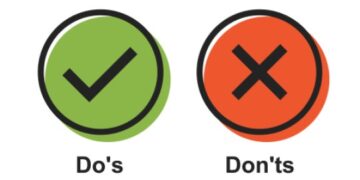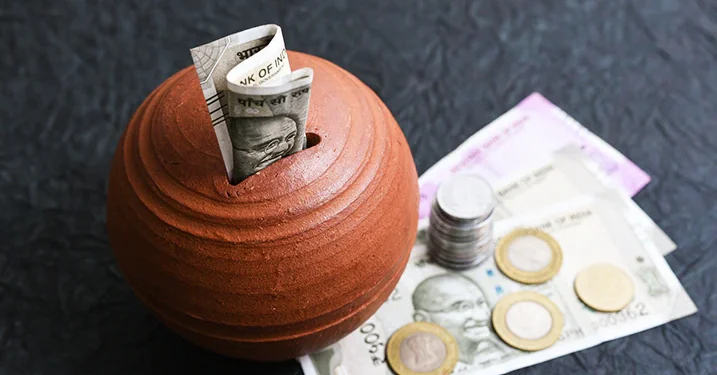You have worked hard to build up your savings account, diligently setting aside your earnings all your life. But in today’s digital age, it’s crucial to shield your savings from the lurking dangers of fraud and identity theft.
Fear not, for we’re here to help! This article will explore the nitty-gritty of safeguarding your savings account in the Indian landscape. From phishing attacks to ATM skimming, we will discuss common threats and arm you with practical strategies to fortify your account.
Get ready to navigate the world of secure online banking and learn how to protect your personal information like a pro. Your financial well-being is our priority, so let’s dive in and keep those hard-earned savings safe and sound!
Understanding Common Threats
- Phishing Attacks: Phishing is a prevalent threat where fraudsters deceive individuals through deceptive emails, messages, or websites to obtain sensitive information like login credentials and personal details.
- Identity Theft: Criminals engage in identity theft by illegally acquiring and using personal information for fraudulent activities, including unauthorised account openings and financial transactions.
- ATM Skimming: ATM skimming involves the use of devices that capture card information and PINs during ATM transactions, allowing criminals to clone cards and make unauthorised withdrawals.
- Malware and Ransomware: Such dangerous elements can compromise your computer or mobile device, making personal information vulnerable while granting unauthorised access to your savings account.
Strengthening Password and Account Security
- Strong Passwords: Create strong, unique passwords for your savings account using a combination of uppercase and lowercase letters, numbers, and special characters. Avoid easily guessable information like birth dates or names.
- Two-Factor Authentication (2FA): Enable 2FA for your savings account whenever possible. This extra layer of security requires a second form of verification, such as a unique code sent to your mobile device, in addition to your password.
- Regular Password Updates: Regularly update your account passwords to minimise the risk of unauthorised access. Avoid using the same password across multiple platforms, and consider using a reliable password manager to securely store and manage your passwords.
- Account Alerts: Sign up for account alerts provided by your bank to receive notifications of suspicious or unauthorised transactions on your savings account. Report any suspicious activity promptly to your bank for immediate action.
Practising Secure Online Banking
- Official Websites and Apps: Ensure that you, and only you, can access your savings account through official banking websites or verified mobile applications provided by your bank. Avoid clicking on suspicious links or downloading apps from untrusted sources, as they may be designed to collect your sensitive information or compromise your account security. It’s always safer to navigate directly to your bank’s official website or use their official mobile app.
- Secure Internet Connection: When conducting online banking activities, using a secure internet connection is crucial. Use your home network or a trusted Wi-Fi network with a password. Public or unsecured networks, such as those in cafes or airports, can be vulnerable to hackers who can intercept your data. By using a secure connection, you minimise the risk of unauthorised access to your savings account.
- Be Wary of Phishing Attempts: Phishing attacks remain a common tactic fraudsters use to trick individuals into revealing their personal information. Be vigilant and cautious of unsolicited emails, text messages, or phone calls asking for sensitive details like your account number, password, or OTP. Avoid clicking on links in suspicious emails or messages, as they may direct you to fake websites designed to capture your information. When in doubt, contact your bank directly to verify the authenticity of any communication.
- Keep Software Updated: Regularly update the operating system, browser, and security software on your computer and mobile devices. Software updates often include important security patches that address known vulnerabilities. By keeping your devices up to date, you can protect against potential exploits and ensure a safer online banking experience.
Protecting Personal Information
- Privacy Settings: One of the best ways to prevent banking fraud is to secure your social media accounts and visibility. Sharing too much information about your life can attract scammers. Limit the visibility of your personal information to the public, as cybercriminals can gather information from social media profiles to conduct targeted attacks. Be cautious about sharing sensitive details on public platforms like your address, phone number, or financial information.
- Shredding Documents: When disposing of financial statements that show you your earning details, savings account interest rates, bank receipts, or any other documents containing personal information, make sure to shred them properly. This prevents unauthorised individuals from retrieving your sensitive details through methods like dumpster diving. Invest in a cross-cut shredder to ensure the documents are destroyed beyond recovery.
- Securing Personal Devices: Protect your mobile devices and computers by using strong passwords or biometric authentication, such as fingerprint or facial recognition. Set up a secure lock screen to prevent unauthorised access. Enable remote tracking or wiping features on your devices to locate or erase data in case of loss or theft.
- Beware of Public Wi-Fi: Avoid accessing your savings account or conducting financial transactions when connected to public Wi-Fi networks, as they may lack proper security measures. Hackers can intercept your data on unsecured networks, potentially compromising your account information. To use your account while travelling, take the help of a reputed Virtual Private Network (VPN) for an added security measure.
Monitoring and Detecting Suspicious Activity
- Regularly Review Statements: Monitor your savings account statements and transaction history closely. If you come across any unfamiliar or unauthorised transactions, report them to your bank immediately for investigation and resolution.
- Set Transaction Limits: Consider setting transaction limits on your savings account to minimise the potential impact of fraudulent transactions. Consult with your bank to explore the options and determine the appropriate limits based on your financial needs.
- Monitor Credit Reports: Regularly check your credit reports from authorised credit bureaus to identify any suspicious activity or unauthorised accounts opened in your name. If you notice any discrepancies or inaccuracies, promptly report them to the credit bureau and inform your bank.
- Use Account Monitoring Tools: Take advantage of account monitoring tools provided by your bank or third-party services. These tools can help detect and alert you to any unusual or suspicious account activity, providing an extra layer of protection for your savings account.
Educating Yourself and Staying Informed
- Stay Updated on Security Practices: Stay informed about the latest security practices and trends in online banking and financial fraud. Follow reputable sources such as your bank’s official communications, financial news outlets, and security blogs to stay updated with the evolving threats and preventive measures.
- Educate Yourself on Social Engineering Techniques: Familiarise yourself with common social engineering techniques fraudsters use to manipulate individuals into sharing sensitive information. Be cautious of unsolicited communications, requests for personal information, and urgent demands for money. Verify the authenticity of any communication before responding or providing any sensitive details.
- Attend Security Awareness Programs: Take advantage of security awareness programs or workshops conducted by your bank or other financial institutions. Such programs can help citizens improve their understanding of online banking, security measures, and best practices. When taken seriously, it can work wonders for senior citizens to protect their online data and banking privacy against fraudsters and scammers.
- Seek Assistance from Your Bank: If you encounter any suspicious activity on your bank transcripts, do not hesitate to reach out to your bank’s customer support. In case your card or account has experienced fraud, immediately visit the nearest branch for aid.
Final Word:
Understanding how to take control of your virtual savings accounts and protect them from fraudulent activities. Follow the tips mentioned above to make the best of your online banking facilities. Whenever any suspicious activities like phishing scams, contact your bank immediately to avoid losing your savings.



































